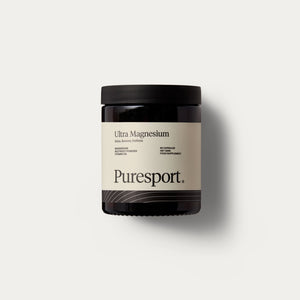Witch Hazel Ingredient Overview
Witch hazel is well known for its usage in cosmetics, however it has a variety of other benefits which can be beneficial for more diverse health and wellbeing concerns.
What is Witch Hazel?
Witch hazel isn’t one plant but rather a genus of them containing five different species. Three of these species are native to North America, including H. virginiana, H. ovalis, and H. vernalis. The two other species are named H. japonica (Japanese witch hazel) and H. mollis (Chinese witch hazel), and they grow in Japan and China, respectively.
In most cases, witch hazel plants grow into shrubs or small trees that reach a maximum height of about 7 metres. Witch hazel is known for its flowers coming in at the same time as the fruits from the previous year reach maturity, which is where the genus name “Hamamelis” comes from.
One fascinating thing about witch hazel is that its fruit explosively comes apart during the autumn, with the seeds being propelled up to 9 metres away. This has earned witch hazel its other name, “snapping hazel” due to the snapping sound that the fruit capsule makes when it splits apart.
While the name witch hazel may be evocative of pointy hats and broomsticks, the plant’s name actually comes from the Middle English word “wiche.” This word meant bendable or pliable, and had no relation to the term “witch.” Some historical texts allude to the fact that the branches of the witch hazel tree may have been used as divining rods.
What is Witch Hazel Used For?
Is Witch Hazel Good for Skin?
Witch hazel for skin is one of the most common uses of this plant and products that are derived from it. Sensitive skin is one of the more common conditions that this plant has been used to treat, and studies have been conducted to determine whether or not it can do so.
As per the results of the study, witch hazel was able to stop erythema from occurring, which is a reddening of the skin that is linked to irritation and injuries. Test subjects who used witch hazel after the injury occurred had 27% less irritation than the control group. In the case of this study, the witch hazel was applied to the skin topically.
This may also contribute to the anecdotal evidence of using witch hazel for bruises.
Witch Hazel for Infection
Other studies have shown that witch hazel may be able to help the body avoid being infected by certain viruses. For example, a test tube study determined that witch hazel’s tannins were able to slow the infection rate of HPV and influenza A. Yet another test tube study determined that witch hazel extract could help slow down herpes simplex 1.
One thing to consider is that the results of these studies may be promising, but they lack the complex factors that are present in human studies that would confirm the findings. The scientists conducting the studies noted that further research on humans and animals was required to determine the effectiveness of witch hazel.
Is Witch Hazel Good for Acne?
Witch hazel is also known for its anti-inflammatory properties, as acne is directly linked to long-term inflammation. Proponents of witch hazel for acne recommended cleansing or steaming the face before using it and then applying a witch hazel product directly to the skin that is affected by acne.
It can help reduce the prevalence of acne because witch hazel acts as an astringent, which makes the skin on your face contract, shrinking your pores. At the same time, witch hazel soothes the skin and reduces any inflammation that may be occurring, reducing the chances of bacteria on your skin developing into further acne breakouts.
Witch Hazel After Birth
Witch hazel’s soothing properties are also taken advantage of after childbirth, particularly when a baby is delivered vaginally. In births that result in vaginal tearing or other injuries, the Mayo Clinic recommends using a chilled witch hazel pack to soothe the area between the vagina and the anus.
This can help reduce the inflammation caused by the wound, reducing the amount of pain that you experience.
Where Can You Find Witch Hazel?
Witch hazel and its supplements are relatively easy to come across, and they can be purchased at local pharmacies or even online.
It can either be found in its pure form or you may find witch hazel incorporated into other products, such as lotions and hair products. It’s often a good idea to look at the ingredients of the solution or lotion that you’re getting your hands on to ensure that it has the witch hazel concentration that you’re looking for.







